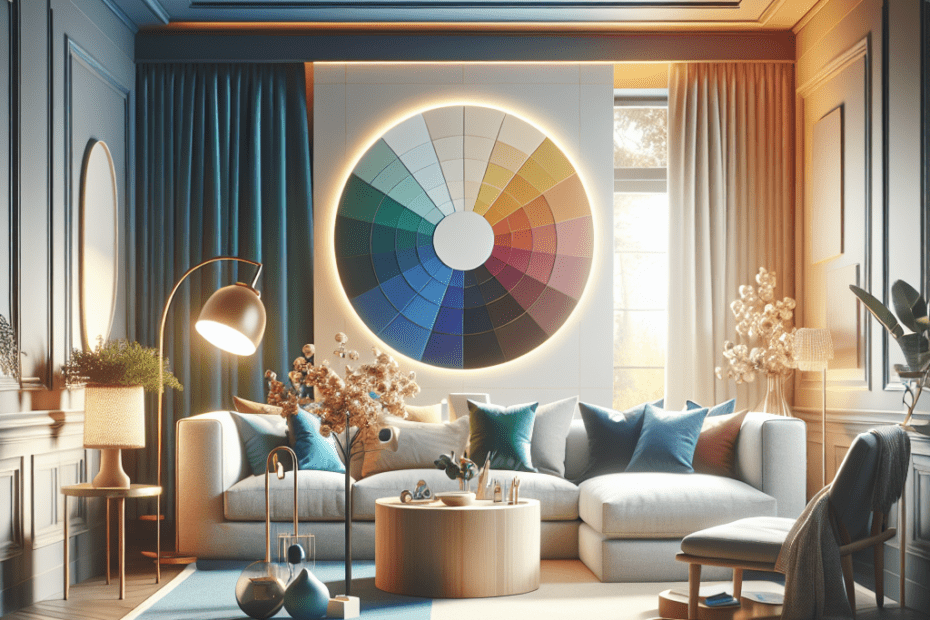“`html
How to Style a Room with Complementary Colors for Balance
Decorating a room can be an exciting adventure but also a daunting task. Many people seek balance and harmony with their room designs, and choosing complementary colors can be the key to achieving this balance. Complementary colors in design not only add visual interest but also create a sense of harmony and contrast that can transform any room.
Understanding Complementary Colors
Complementary colors are pairs of colors that, when combined, create a vivid and pleasing contrast. They are positioned opposite each other on the color wheel. Some common examples include blue and orange, red and green, and yellow and purple. These combinations enhance each other, producing visual vibrancy.
The Science Behind Complementary Colors
Psychologists suggest that the human brain is hardwired to appreciate this dynamic contrast. According to a color theory study published in the Advances in Social Science, Education and Humanities Research Journal, using complementary colors can improve mood and improve cognitive performance in learning environments by up to 60%. This is excellent news for anyone looking to refresh or enhance their living space with complementary colors in design.
Choosing the Right Pairs
When styling a room with complementary colors, it’s crucial to select the right pair. Begin by examining a color wheel. Identify dominant colors already present in your space and select their complementary counterparts. For instance, if a room predominantly uses blues, introducing accents in shades of orange can create a balanced and appealing look.
| Primary Color | Complementary Color |
|---|---|
| Red | Green |
| Blue | Orange |
| Yellow | Purple |
Applying Complementary Colors in Different Spaces
While complementary colors can be striking, applying them thoughtfully is key to not overwhelming the space. Here are some visually effective ways to incorporate complementary colors into various spaces:
- Living Room: Use a bold complementary color duo, such as teal and coral, to create an inviting and warm atmosphere. Add complementary throw pillows, rugs, or art pieces to foster harmony.
- Bedroom: Soften the contrast by choosing pastel versions of complementary pairs to promote relaxation and serenity, such as lavender and light yellow accent pieces.
- Kitchen: Use colored kitchenware or décor items, like teal and orange utensils or red and green backsplash tiles, to add an exciting pop of color and energy.
Balancing the Intensity
Although complementary colors boost visual interest, balance is vital. To prevent them from overpowering the space, use neutral tones such as white, gray, or taupe to balance the decor. This prevents the room from feeling overwhelmed and ensures a clean, well-proportioned look.
The Impact of Light and Textures
Light affects how we perceive color. Visitors might want to consider how natural and artificial lighting in a room interacts with complementary colors. Additionally, different textures can emphasize certain hues, creating depth and interest. For instance, a velvet green cushion can have a different effect on a red velvet couch compared to matte silk with the same color.
Key Takeaways
Styling a room with complementary colors in design involves creating harmony through contrast. By utilizing the color wheel, selecting the right color pairs, and considering lighting and textures, one can transform simple spaces into dynamic environments that boost mood and productivity.
FAQ Section
- What are complementary colors? Complementary colors are pairs of colors that sit opposite each other on the color wheel and intensify each other when used together.
- Why use complementary colors in room design? They add visual interest, balance, and harmony while stimulating mood and cognitive function.
- How can I find the right complementary colors? Use a color wheel to identify complementary pairs. Consider existing colors in your space to find balanced combinations.
- What should I avoid when using complementary colors? Avoid using vibrant shades together in large amounts. Instead, complement them with neutral tones to maintain balance.
- How do lighting and texture affect complementary colors? Light can change how colors appear, and textures can add dimension, making certain hues more prominent.
“`
